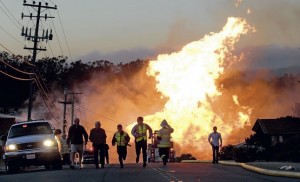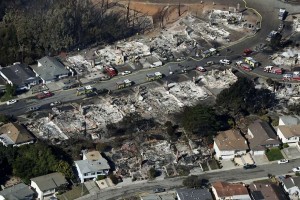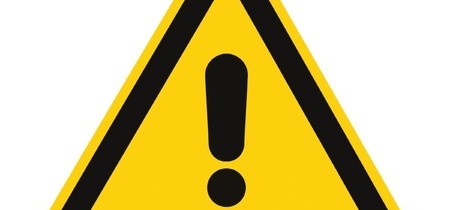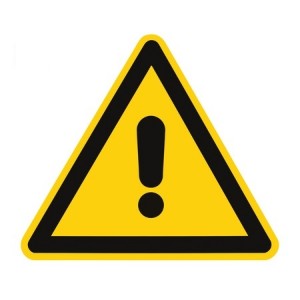What Happens When Rhetoric Is Misaligned With Practices
Safety is one of the 17 Common Values found across Fortune 500 companies. It is most prevalent amongst industries that have considerable risks of physical danger to employees, such as oil & gas, construction, and manufacturing. (I sense there’s a correlation between higher Worker’s Compensation fees and the inclusion of safety as a stated value.)
The other key reason of including safety as a value is when there is significant risk of harm to the general public. However, simply stating that safety is important at a company doesn’t mean that actual decisions and behaviors support it.
When the rhetoric doesn’t match what’s practiced, it’s simply a matter of time before everyone finds out – and bad things happen.
An Explosion Waiting to Happen
When it comes to consumer safety concerns, the fear of a natural gas explosion is near the top of the list. Miles and miles of pipeline are buried under the streets and homes of millions of Americans, providing natural gas to households and businesses everywhere. So the continuous monitoring of these pipes for potential leaks – and thereby possible explosions – is a non-negotiable requirement from the companies who own and manage them. One spark around a gas leak and there is instant havoc.
 This is what happened on September 9, 2010 in San Bruno, California, a suburb of San Francisco. At around dinner time on that fateful Thursday, a 30-inch diameter natural gas pipe, owned by Pacific Gas & Electric (PG&E), suddenly exploded, leveling 35 homes and killing 8 people. The ensuing fire destroyed even more. The explosion was so big, it blew a 28-foot long section of pipe more than 100 feet out of the ground, leaving a massive crater that looked like a bomb had gone off.
This is what happened on September 9, 2010 in San Bruno, California, a suburb of San Francisco. At around dinner time on that fateful Thursday, a 30-inch diameter natural gas pipe, owned by Pacific Gas & Electric (PG&E), suddenly exploded, leveling 35 homes and killing 8 people. The ensuing fire destroyed even more. The explosion was so big, it blew a 28-foot long section of pipe more than 100 feet out of the ground, leaving a massive crater that looked like a bomb had gone off.
During the days prior to the explosion, some residents reported smelling natural gas in the area. Indeed, PG&E reported that a break in natural gas line #132 had caused the explosion.
Was this a freak accident? Or was this the result of poor safety procedures at PG&E?
Looking at PG&E’s stated values, it would appear that safety is a top priority at this company, as reflected in at least one of their five values:
We are accountable for all of our own actions: these include safety, protecting the environment, and supporting our communities:
– Build safety into everything we do
– Take accountability for actions, decisions and results vs. blaming
– Demonstrate commitment to improving the health and wellbeing of the environment and the communities we serve
– Act in a way that connects the company’s actions and the wellbeing of the community
This sounds like a solid value. But there appears to be a disconnect between what’s stated and the decisions made regarding PG&E’s safety procedures.
Investigators’ Findings
 At the beginning of 2011, federal investigators reported they had found numerous defective welds in the pipeline. The thickness of the pipe varied, and some welds did not penetrate the pipes completely. As PG&E increased the pressure in the pipes to meet growing energy demand, the defective welds were further weakened until their failure. Considering the pipeline had been installed 54 years prior, it wasn’t a complete surprise that it failed.
At the beginning of 2011, federal investigators reported they had found numerous defective welds in the pipeline. The thickness of the pipe varied, and some welds did not penetrate the pipes completely. As PG&E increased the pressure in the pipes to meet growing energy demand, the defective welds were further weakened until their failure. Considering the pipeline had been installed 54 years prior, it wasn’t a complete surprise that it failed.
The big question was whether or not PG&E performed regular inspections, critical testing, and timely replacement of old pipes to ensure such a catastrophe would never happen.
A separate investigation by the National Transportation Safety Board (NTSB) described the San Bruno disaster as “an organizational accident” because the utility was already on notice for violations in earlier pipeline explosions. Referring to this report, the CPUC added, “PG&E, with such knowledge, could have taken proactive steps to correct the violations and prevent the devastating explosion in San Bruno.”
An important note regarding this industry: there is a Natural Gas Pipeline Safety Act that requires operators of gas pipes to maintain accurate records, identify risks to lines, and inspect or test when pipe pressures exceed the legal maximum. In other words, minimum safety procedures were already established. PG&E just needed to follow them.
In April 2014, PG&E was indicted by a federal grand jury for multiple violations of the Natural Gas Pipeline Safety Act relating to its record keeping and pipeline “integrity management” practices. An additional indictment was issued in July 2014, charging the company with obstruction of justice for lying to the NTSB regarding its pipeline testing policy, bringing the total number of counts in the indictment to 28.
There was something obviously wrong at PG&E. The company had a history of poor safety procedures. The decisions and behaviors at PG&E were not aligned with the company’s stated values.
Big Consequences for Misalignment
The result of this misalignment – that had been going on for years – was evident in the action taken by the California Public Utilities Commission (CPUC) in April 2015. The Commission approved a record $1.6 billion in fines and penalties against PG&E for the San Bruno explosion. The CPUC also stated it was conducting a wide-ranging probe into PG&E’s safety culture, citing numerous lapses in PG&E’s natural gas pipeline system even since the explosion.
 In addition, an independent review panel of experts convened by the CPUC issued an appalling assessment of PG&E’s management for its gas pipeline operations and safety, stating, “the rubber did not meet the road” in how the company implemented risk-management and safety procedures. The report also blamed PG&E’s board and executives for what it called a dysfunctional company culture “whose rhetoric does not match its practices.”
In addition, an independent review panel of experts convened by the CPUC issued an appalling assessment of PG&E’s management for its gas pipeline operations and safety, stating, “the rubber did not meet the road” in how the company implemented risk-management and safety procedures. The report also blamed PG&E’s board and executives for what it called a dysfunctional company culture “whose rhetoric does not match its practices.”
That’s a very telling statement. It’s a sign of even bigger problems.
For many years, PG&E management had been blatantly robbing funds earmarked for safety operations to pay themselves bonuses. An independent audit from the State of California issued a report that PG&E had diverted over $100 million in gas safety and operations money for bonuses and executive compensation, including a $38 million bonus to the CEO at the time of the blast.
As an angry San Bruno Mayor openly stated about PG&E, they demonstrated a pattern of deceit, where “multiple investigations found PG&E’s tragic explosion to be entirely man-made and the result of its willful decision to divert pipeline safety funds and use them for executive compensation and shareholder returns for many decades.”
There is only one word to describe this situation: shameful.
———————-
Bottom Line: If a company states Safety as a core value, all decisions and behaviors better be aligned to support it. If not, it’s only a matter of time before really bad things happen.
———————-
Are decisions and behaviors at your company aligned with the stated values? If not, and you can make a difference, now is the time to fix it before it’s too late.









